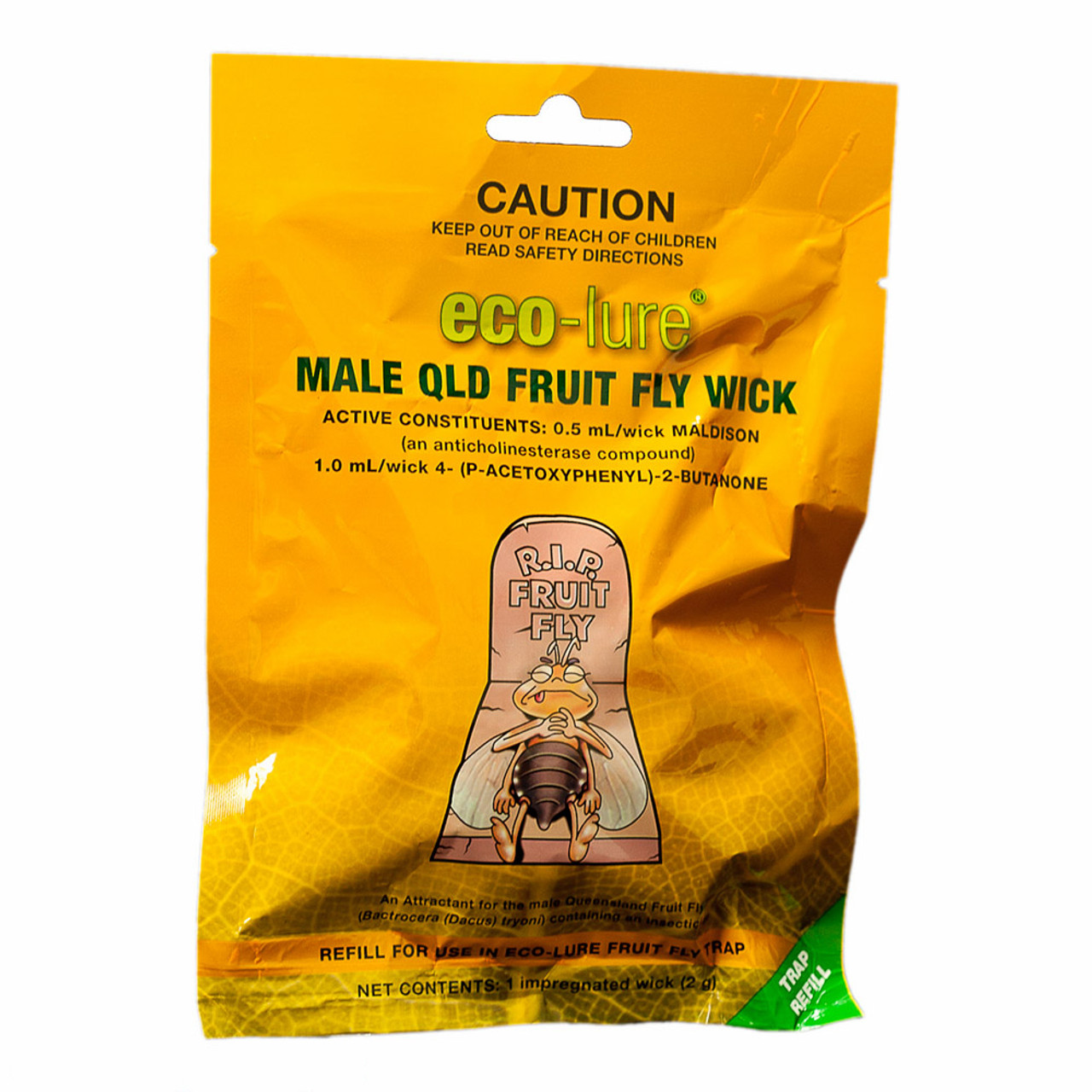Description
THIS PRODUCT: eco-lure male Queensland fruit fly trap replacement wick has been impregnated with a pheromone attractant and a non-organic insecticide. Male QLD fruit flies are attracted to the pheromone, enter the trap and are killed when they touch the wick.
Hang in foliage at the beginning of the season and check regularly. When dead flies appear you’ll know flies are active and it is time to start spraying eco-naturalure to control females as well.
eco-lure on it’s own is not sufficient to completely protect fruit which is why we recommend including eco-naturalure as part of your protection program.
Replace wicks every 3 months or as required.
Features:
- Powerful pheromone attractant is irresistible to male QLD fruit flies
- Attracts and kills male QLD fruit flies
- Targets only male QLD fruit fly and won’t attract beneficial insects
- eco-lure trap will attract flies from approximately 400m
Fruit fly traps are devices or solutions designed to attract and capture fruit flies, which are small flying insects that can be a nuisance in homes, particularly in kitchens and near fruit bowls. These traps are commonly used to help reduce fruit fly infestations. Here’s some information on fruit fly traps:
- Commercial Fruit Fly Traps: There are various types of commercial fruit fly traps available on the market, and they generally fall into two categories:
a. Liquid Traps: These traps use a liquid bait to attract fruit flies. Common bait solutions include apple cider vinegar, wine, fruit juice, or a mixture of these. Fruit flies are lured by the scent and fly into the trap, where they become trapped and drown in the liquid.
b. Sticky Traps: Sticky traps are adhesive sheets or containers with a sticky surface that fruit flies land on and become stuck. Some sticky traps are scented to attract the flies. These traps are effective for capturing adult fruit flies.
- DIY Fruit Fly Traps: You can easily make your own fruit fly traps using household items. Here are a couple of popular DIY options: a. Apple Cider Vinegar Trap: Fill a small container with apple cider vinegar, cover it with plastic wrap, and poke several small holes in the plastic wrap. Fruit flies will be attracted to the vinegar, crawl through the holes, and become trapped inside. b. Fruit Juice Trap: Place a small amount of fruit juice in a cup or jar and cover it with plastic wrap, securing it with a rubber band. Poke small holes in the plastic wrap to allow fruit flies to enter but not exit. c.Fruit Fly Lures: In addition to traps, you can use fruit fly lures or baits that are specifically designed to attract and capture fruit flies. These lures often come in the form of liquid or gel and can be placed in a container or near a trap to enhance its effectiveness.
- Placement: To maximize the effectiveness of your fruit fly trap, place it near areas where fruit flies are commonly found, such as fruit bowls, garbage cans, and compost bins. You can also strategically place traps in different areas of your kitchen.
- Regular Maintenance: Fruit fly traps should be checked and emptied regularly, especially if they become filled with fruit flies. Refill or replace the bait as needed to keep the trap attractive to the flies.
- Preventative Measures: To prevent fruit fly infestations, store ripe fruits and vegetables in the refrigerator, keep kitchen surfaces clean, and promptly dispose of overripe or rotting produce. Additionally, make sure to seal garbage cans and compost bins tightly.
Overall: Fruit fly traps are a practical and non-toxic way to manage fruit fly populations in your home. While they won’t eliminate fruit flies entirely, they can help significantly reduce their numbers and make your kitchen a more pleasant place to be.


